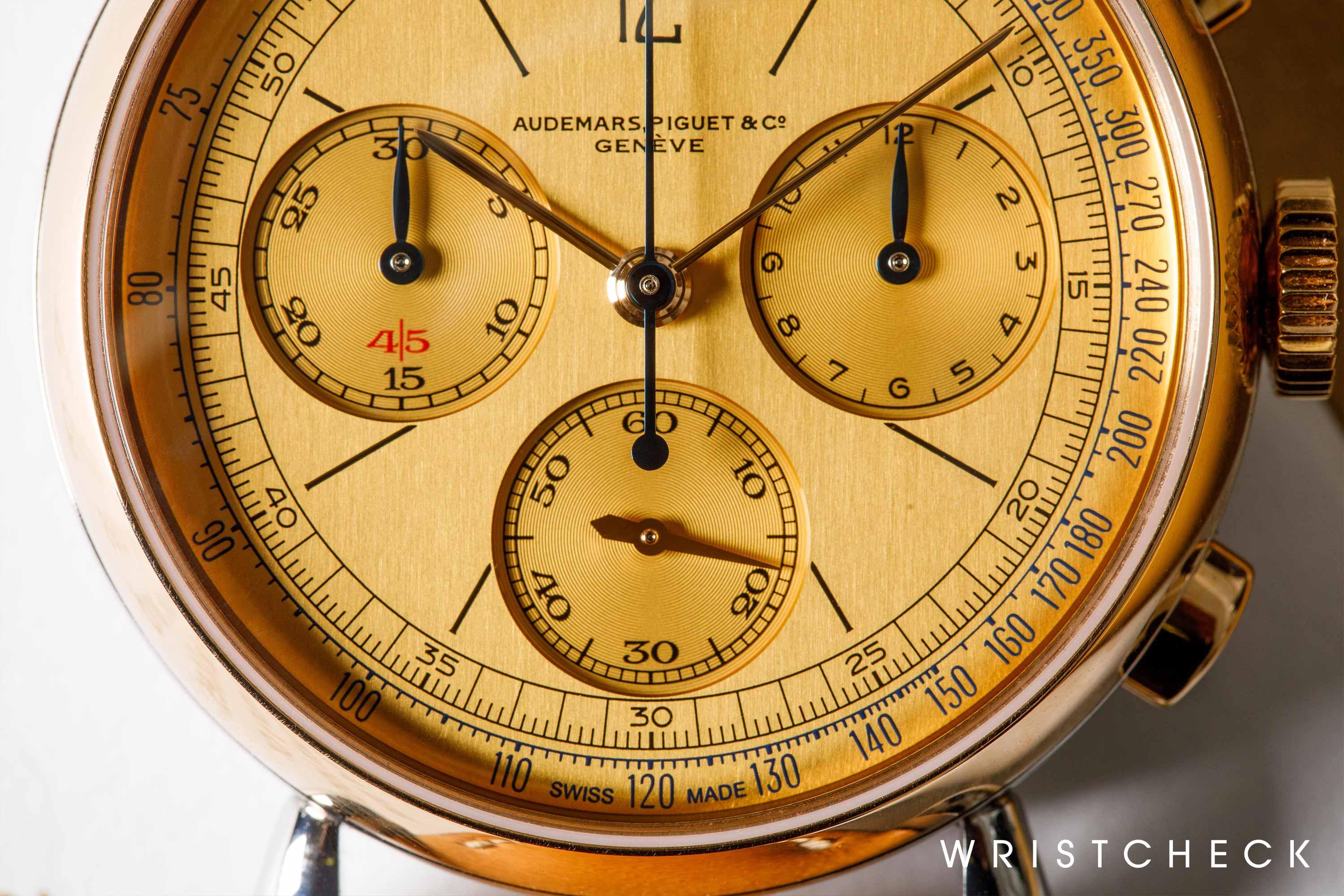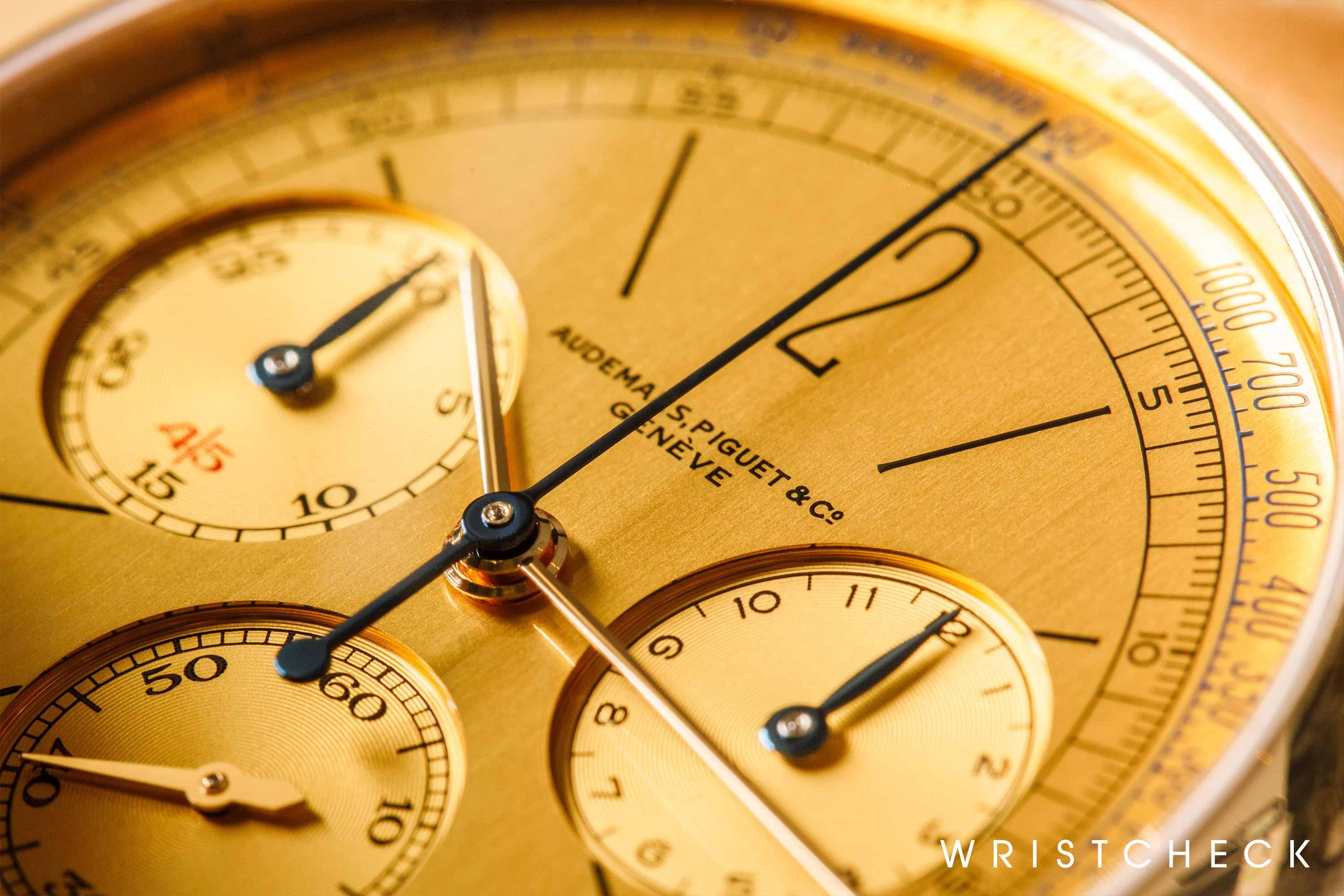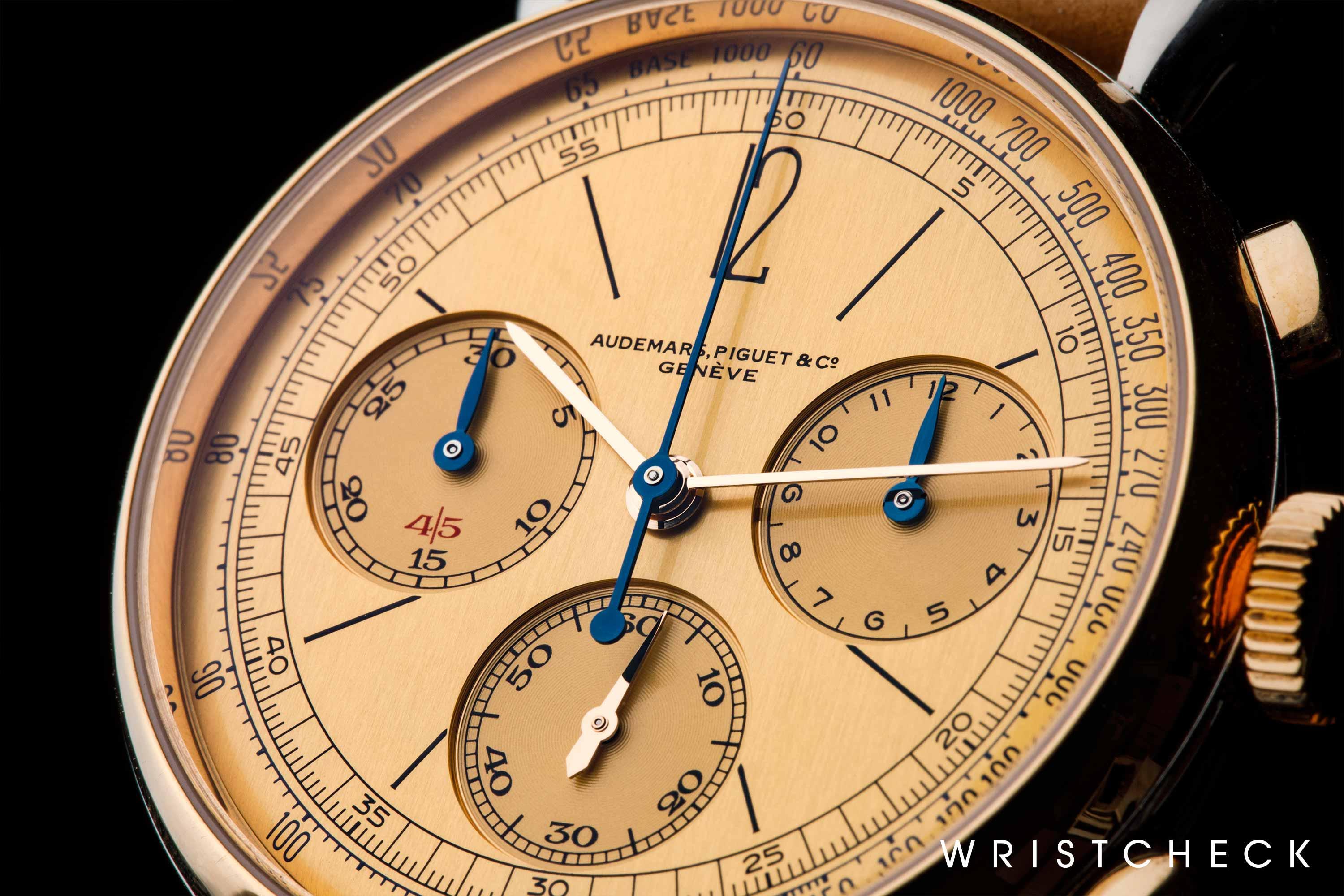
This thoughtful twist on an underrated vintage chrono sees Le Brassus’s premiere watchmaker doing a rare bit of reminiscing (and with spectacular results)
When Audemars Piguet unveiled the [Re]master01 early last year, it was a testament to the company’s determination not to slip into complacency despite the very real economic and social dangers of the Pandemic. With such a strong release straight out of the gate, we should have known the year would wrap with something as impressive as a ceramic timepiece utilising twinned balance wheels. But unlike the aforementioned Royal Oak Openworked, the [Re]master01 is a departure from AP’s standard operating procedure these last several years: combining a design language mainly familiar to historians of the brand with technology that shores up the watch’s wearability and relevance to modern audiences.
![The Audemars Piguet [Re]master01](/_next/image?url=https%3A%2F%2Fwc-strapi.s3.ap-east-1.amazonaws.com%2Farticle_import%2Fimages%2F8%2F593A3253_0.jpg&w=4320&q=75)
The influence of the historically important Ref. 1533
Whereas many key players within the watch industry mine their own archives judiciously for inspiration, that’s a relatively rare occurrence at AP -- making the [Re]master01 an even more intriguing release by modern standards. It’s based on the historic Ref. 1533, and as with many seminal designs developed by ‘frenemies’ like Vacheron Constantin and Patek Philippe, originated in the 1940s. Heritage-minded collectors get really excited about the 1533’s relative scarcity. According to AP’s own records, no more than 307 pieces of this reference were ever produced; with a further 9 being made in the stonkingly rare ‘two-tone’ (i.e. gold & steel) configuration. Needless to say, when the latter come up at auction they tend to clear anywhere between US$340,000-$430,000 -- evidencing the enduring, if highly specific appeal of large vintage chronographs.

“Days of Future Past”
That obscure 9-piece run is the [Re]master01’s starting point: supplying the latter with certain constructive design basics that are then enriched by tweaking the watch’s scale and iconography. Michael Friedman (Head of Complications, AP) calls this “a contemporary remastering of a past creation”, a neat little soundbyte acknowledging the watch’s strong neo-vintage charm and how that interacts with its very modern automatic in-house movement.
It’d be disingenuous to call the [Re]master01 a carbon copy of the 1533, but equally, it’s impossible not to observe an uncanny resemblance between the two. All of the key design elements remain intact: the teardrop lugs and olive-shaped chronograph pushers; the case alloyed in a mixture of steel and pink gold; and the typefaces printed on the registers that exhibit the serif fonts of yesteryear.

Furthermore, two additional details give the [Re]master01 a little more oomph with those enthusiasts who happen to appreciate the occasional bit of fan service. The dial’s gilt finish alludes to one specific example of the two-tone 1533 -- ergo, the only version ever to be manufactured with a champagne dial. Better still, positioned at 12 o’clock you’ll find an authentic reproduction of the original AP signature. Unlike the alphabetic logo synonymous with the Royal Oak, the branding here consists of two consecutive lines that read ‘Audemars, Piguet & Co/Genève’. The ‘o’ at the tail-end of the first line is stylised with a macron -- a flourish that puts the whimsical throwback charm of this release front and centre.
Marks of modernity: movement and size
![Calibre 4409 of the Audemars Piguet [Re]master01](/_next/image?url=https%3A%2F%2Fwc-strapi.s3.ap-east-1.amazonaws.com%2Farticle_import%2Fimages%2F8%2F593A1507.jpg&w=4320&q=75)
There’s no denying that the broad strokes of the [Re]master01 possess a strong historic influence, but on the wrist you can plainly tell that this is an extremely contemporary expression of mid-century watchmaking. The watch’s size is a bit of a giveaway: the 40mm x 14.6mm case stretches out and sits high upon the wrist; and the impression of a very sizable presence is enhanced by the shape of the pushers and lug-to-lug width. The dimensions alone are enough to set this apart from the 1533, which wears noticeably smaller due to its 36.5mm diameter.
This modern sensibility carries through to the movement: an integrated in-house chronograph that has been the subject of much conjecture since the [Re]master01 release. Enthusiasts familiar with vintage AP had been hoping for a remake of the manually-wound Valjoux 13VZAH, updated with all the technology and knowhow that the newer, more consolidated manufacture has at its disposal. Instead, what collectors are faced with is the new calibre 4409: a cutting-edge column-wheel movement that exploits the technological advancements introduced with the CODE 11.59 collection.

As opposed to some pseudo-vintage remake of the original Valjoux, the 4409 feels like an authentic expression of watchmaking in the present era. Parts like the gold peripheral rotor (decorated with a hobnail pattern) or the many impressively executed examples of chamfering were achieved with the aid of CNC -- allowing watchmakers a more precise and efficient means of machine working as compared to previous generations. And the benefits aren’t purely superficial: hi-tech manufacturing processes and the use of better materials have made the movement more efficient, giving wearers a 70-hour power reserve despite the [Re]master01’s relatively rapid oscillation rate.
Over the coming years, we’re bound to be seeing more of AP’s classic vintage models get the ‘remaster’ treatment. But for the moment, the [Re]master01 inhabits a class of its own. When you consider that the size of this production (500) is roughly one twentieth of AP’s more established models, that’s hardly surprising.
